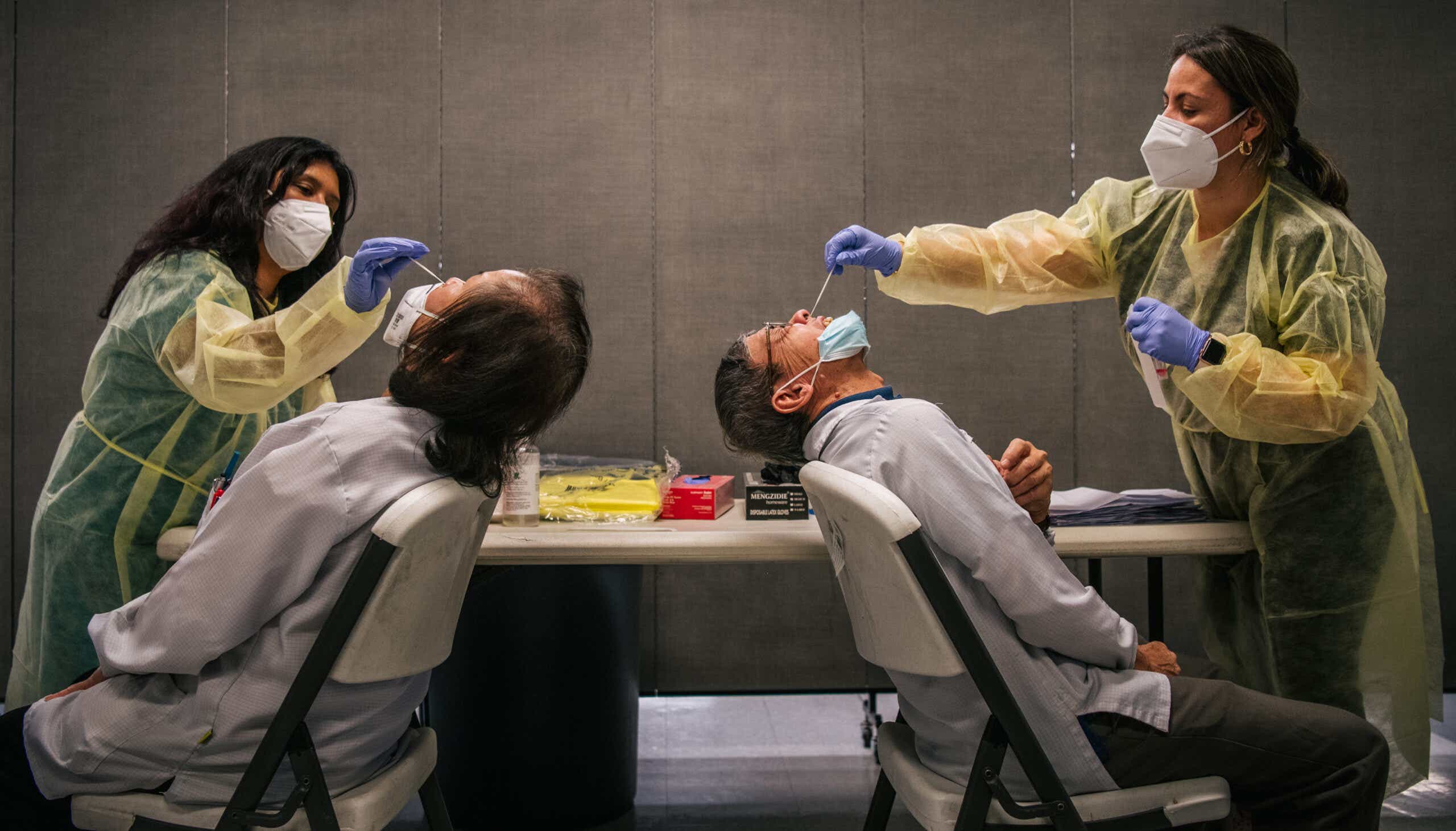There’s a new Covid kid on the block. A “subvariant” of Omicron, BA.2 has some characteristics that distinguish it from Omicron original, but not quite enough to constitute a fresh Covid lineage. “You could say they’re like brothers in the same family,” infectious diseases expert Cameron Wolfe told NBC. “There are some subtle differences, but most of the genetics are the same in both.”
Here’s what you need to know about BA.2, and how worried we should be about it.
There’s no need to panic
BA.2, which was first detected in mid-November, moves pretty quickly and has since spread to 49 countries, including the U.S. But that doesn’t automatically mean it’s a major new threat. “Among all the lineages of Omicron, this is the one showing a higher increase of cases. But we have to be careful in interpreting that, because higher increases from a very low number are easier to observe,” Ramon Lorenzo-Redondo, an assistant professor of medicine for infectious diseases, told CNN.
What’s different about BA.2?
As Omicron spread over the last few months, it will have — as is the case with all viruses — mutated to develop new characteristics that can affect how contagious it is, and how severely it affects the infected. There are as-yet unconfirmed concerns that mutations found in the BA.2 subtype could make it more contagious or better able to evade vaccines than the original version.
BA.2 has 28 mutations in its spike proteins, several of which are different from the original Omicron strain. Omicron has 50 genetic mutations that distinguish it from the original version of the coronavirus, of which 36 are to its spike proteins. Spike proteins, which cover the outside of the virus, are the parts targeted by vaccines and other treatments.
Judging by early research from Denmark, where it’s now the dominant variant accounting for nearly half of all new Covid cases, BA.2 appears to be more contagious than the original Omicron variant.
Why is it called the ‘stealth variant’?
One of BA.2’s mutations got rid of a genetic quirk that made Omicron easily identifiable in PCR tests — which aren’t typically used to identify individual variants.
Unlike Omicron, BA.2 doesn’t cause an s-gene target failure signature on these tests, meaning it can present like other SARS-CoV-2 variants on the first screen. This doesn’t mean it’s undetectable — as Lorenzo-Redondo told CNN, “Both FDA-approved lab-based and at-home tests should detect this lineage, as well as the other Omicron (sublineage), BA.1.”
Will vaccines work against BA.2?
There’s no sign yet that BA.2 causes more severe disease than the original strain of Omicron. According to a report released Thursday by the UK’s Health Security Agency, it seems that current vaccines protect about as well against BA.2 as they do against the original Omicron variant, and even offer better protection against symptoms — an average of about 70% — two weeks after a booster.
There’s usually a delay between infections and hospitalizations and deaths however, so we should still treat BA.2 with the utmost caution. This is particularly important in order to protect the older and more vulnerable population, who tend to be affected a little later down the line.
“Severity takes some time to figure out, and it’s often murky,” Wolfe told NBC. “When these things crop up again, they tend to affect younger, more mobile parts of the population first that might not end up in hospitals anyway because they’re otherwise fit and healthy.”









